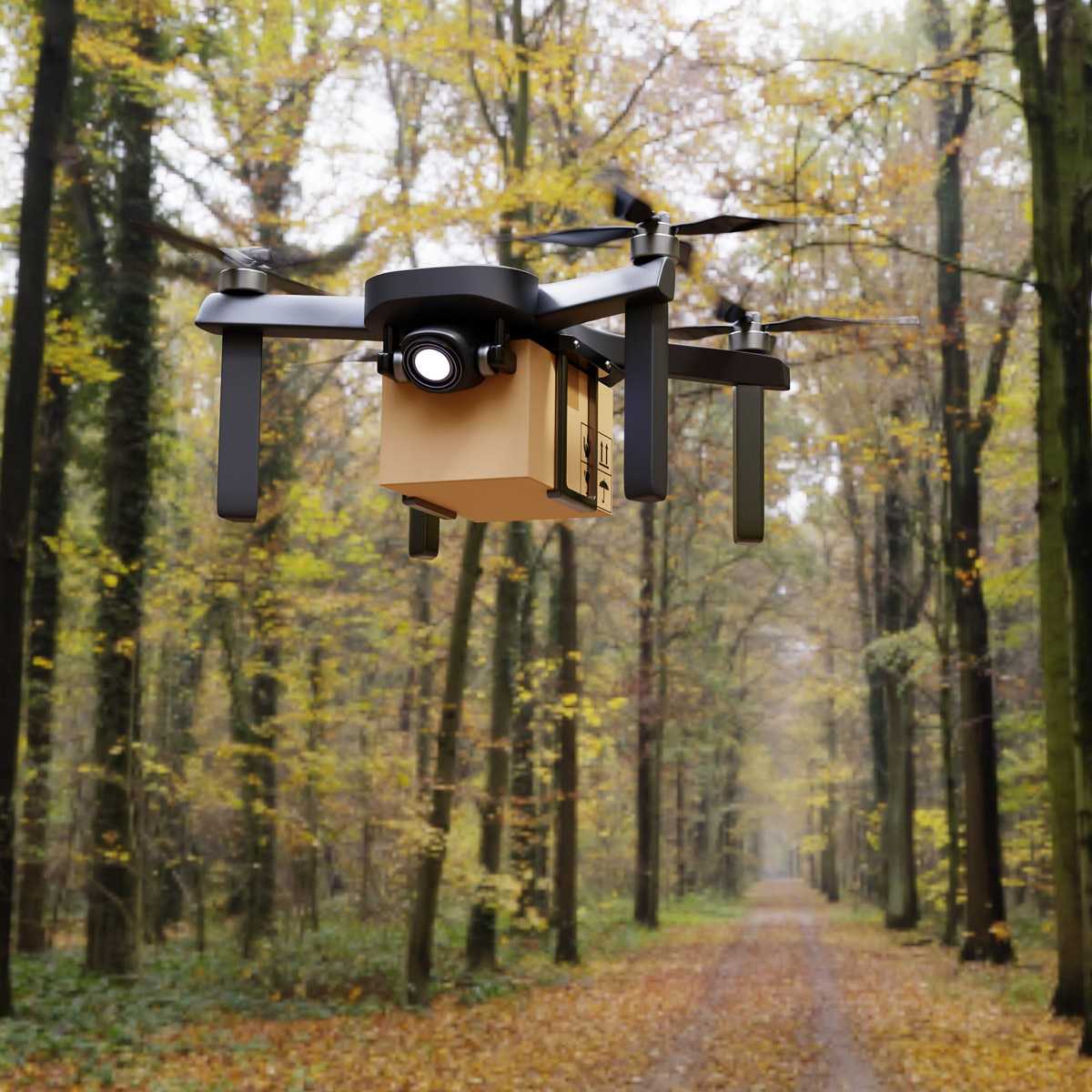

Imagine you’re late for work. You know the roads will be jammed and the subway will be packed. Instead of battling traffic, you step into an electric vertical takeoff and landing (eVTOL) taxi and literally rise above the congestion. While this might sound futuristic, China is actively pioneering innovations and developing the infrastructure to make it a widespread reality in the near future.
Over the past four years, China has prioritized the development of the so-called “low-altitude economy”—manned and unmanned economic activities occurring in the airspace up to 1,000 meters above ground. This sector has advanced rapidly, with China now accounting for over 70% of the world’s low-altitude unmanned aerial vehicle (UAV) patent applications and boasting over 50,000 enterprises engaged in related businesses. Looking ahead, the Civil Aviation Administration of China (CAAC) expects the country’s low-altitude economy to increase more than five-fold, from RMB 670 billion (~USD 93 billion) in 2024 to RMB 3.5 trillion (~USD 483 billion) by 2035.
For multinational companies operating in China, this presents new opportunities to contribute to the sector’s growth and benefit from its development.
China’s Policy Approach: Strongly Encouraging Industry Growth
Since 2021, the Chinese government has consistently highlighted the development of the low-altitude economy as a national priority in top-tier political documents, including the latest Government Work Report from this year’s Two Sessions. Demonstrating its significance, the National Development and Reform Commission (NDRC) established the Low-Altitude Economy Development Division in December 2024 to oversee the sector’s growth. This initiative aligns with China’s broader industrial policies, such as its strategies for electric vehicles and renewable energy, where government support has markedly accelerated progress.
To create a favorable policy environment for the industry’s expansion, the Chinese government has also taken steps to simplify regulations for UAVs and eVTOLs. The CAAC introduced a flexible framework for managing low-altitude airspace in 2023, reducing some of the bureaucratic hurdles that have slowed progress in other countries, such as the United States. On top of that, nearly all Chinese provinces have incorporated the low-altitude economy into their local development plans, with Shenzhen and Guangzhou emerging as national leading pioneers. For instance, Shenzhen, aspiring to become “a world-leading low-altitude economy hub,” has already launched drone delivery routes and is testing air taxis.
The Chinese government’s strong focus on the low-altitude economy is driven by three key factors. Firstly, the government has recognized it as a strategic emerging industry essential for developing “new quality productive forces.” As traditional growth drivers like real estate experience slower growth, the low-altitude economy presents a promising new avenue for innovation, efficiency and economic expansion. Secondly, the government aims to boost consumption through initiatives such as low-altitude tourism. Lastly, aerial mobility solutions can help China alleviate urban congestion, expedite last-mile logistics, enhance agricultural productivity and enable disaster response, among other applications, thereby contributing to broader national development.
Scaling Innovation: How Is China Applying Low-Altitude Technologies?
China is already actively applying low-altitude technologies in a range of industries.
In logistics, drones are cutting delivery times in half, particularly in densely populated cities where road transport is often delayed. Instead of relying on couriers, drones fly to designated drop-off stations where packages are dispensed via lockers to customers. In December 2024, Chinese delivery platform Meituan stated that it had already launched 53 drone delivery routes in China’s major cities, such as Beijing, Shenzhen, Guangzhou and Shanghai.
In transportation, autonomous eVTOL taxis are progressing toward commercial launch. One such aircraft, developed by a Chinese aviation company, became the world’s first certified autonomous passenger model, enabling short-distance urban air travel. While regulatory approval in the United States and Europe is still developing, China has already conducted test flights in multiple cities, with potential for broader commercial use in the coming years.
In agriculture, the oldest area of application for low-altitude technologies, UAVs help with real-time crop analysis and spraying, reducing pesticide and water usage. Traditional manual pesticide spraying could cover only 10 to 15 mu (roughly two-thirds to one hectare) per day. Now, a single agricultural drone can handle about 1,000 mu (around 67 hectares) daily, ensuring even coverage without gaps or overlaps. In 2024, China had an impressive nationwide total of over 250,000 UAVs dedicated to agricultural services, reflecting the rapid adoption of drone technology in farming.
Looking Ahead: How Can MNCs Benefit?
Although China’s low-altitude economy is still in its infancy, it is set to experience rapid, transformative growth in the coming years, driven by the continuous introduction of favorable policies at both national and regional levels. Chinese media anticipate that low-altitude technologies will enter commercial use in China within the next three years and become widely available to the general public within the next decade. This swift expansion of the low-altitude economy presents opportunities for MNCs in adjacent sectors to participate and for those in other industries to benefit.
For example, companies in aircraft manufacturing and aviation infrastructure can explore opportunities to directly support the sector’s growth. Retailers and logistics firms should evaluate leveraging aerial mobility solutions to their advantage. In urban transport, ride-hailing companies and automakers need to monitor how eVTOLs could complement or disrupt existing business models. Additionally, firms involved in smart city projects could consider integrating infrastructure for low-altitude technologies into their offerings in China.
To capitalize on these opportunities, MNCs should keep abreast of advancements in policy, technology and the commercial adoption of the rapidly developing low-altitude economy in China. By doing so, they can ensure they remain competitive and well-positioned to leverage the benefits of this dynamic sector.
APCO Intern Sam Kominowski has co-written this article.


